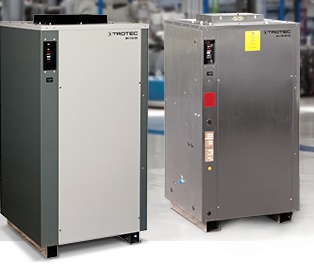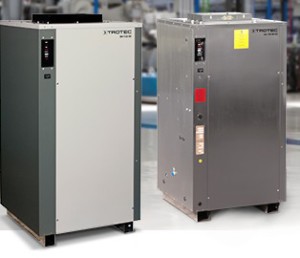Dehumidifier for chocolate factories

Humidity is a ratio representing the amount of water vapor in the air, either as a vapor (if it’s dry) or liquid (if it’s actually raining).
Why does humidity matter in a chocolate & sweet factory?
Making us feel hot is not the only problem, high humidity also causes health problems and people are not aware that their physical activity or exercise could be dangerous in humid conditions, and can result in the following :-
- Heat cramps: Exercising in hot weather can lead to muscle cramps.
- Heat syncope or fainting: Anyone not used to exercising in the heat can experience a quick drop in blood pressure that can lead to fainting.
Key ways to avoid overheating are first, to be aware of not only the temperature, but the heat index and to drink plenty of water. Keeping indoor air at a comfortable and healthy humidity level through the use of Dehumidifiers.
In a chocolate or sweet factory high humidity destroys the product quality. High moisture content in the factory gets absorbed on the outer layer of the finished product before packaging. This affects the quality and shelf life of the chocolate or sweet.
What does a Dehumidifier do?
A Dehumidifier is designed to reduce the level of moisture in the air.
How a dehumidifier works?
There are three ways to remove moisture from the air:-
- By cooling it to condense the water vapor — Cooling-based Dehumidifiers
- By increasing its total pressure which also causes condensation
- By passing the air over a desiccant, which pulls moisture from the air
Vapor pressures (Desiccant Dehumidifiers):
Choosing between desiccant and cooling dehumidifiers
In many situations, both desiccants and cooling-based dehumidifiers can remove moisture from the air, so the question arises – which type to use? Like choosing between different types of desiccant dehumidifiers, there are no simple answers to this question, but there are some general guidelines that have emerged in the industry:
- Cooling and desiccant-based dehumidification systems are most economical when used together. The technologies complement each other, each strength of desiccants covers a weakness of cooling systems and vice-versa.
- The difference in the cost of electrical power and thermal energy will determine the optimum mix of desiccant to cooling-based dehumidification in a given situation. If thermal energy is cheap and power costs high, the economics will favor using desiccants to remove the bulk of the moisture. If power is inexpensive and thermal energy for reactivation costly, the operating economics will favor using more cooling based dehumidification in the project.
- Cooling-based dehumidification systems are more economical than desiccants at high air temperatures and moisture levels. They are very seldom used to dry air below a 40°F dew point because condensate freezes on the coil, reducing moisture removal capacity.
- Desiccants may have useful advantages when treating ventilation air for building HVAC systems which use ice storage. Since these systems deliver air at moderately low dew points (40 to 45° F), dehumidifying the fresh air with the desiccant system decreases the installed cost of the cooling system, and eliminates deep coils with high air and liquid side pressure drops. This saves considerable fan and pump energy.
- Desiccants are especially efficient when drying air to create low relative humidities, and cooling-based dehumidification is very efficient when drying air to saturated air conditions. If the air should be drier than when it entered the machine, but still close to saturation at a lower temperature, cooling-based dehumidification would be a good choice. But if the desired end result is air at a condition far from saturation – low relative humidifies – a desiccant unit would be ideal.
Where can we use Dehumidifiers?
Applications for dehumidifiers are exceptionally diverse. Such equipment can have a very positive impact in:-
-
Chocolate, Sweet & confectionery factory
Typical Applications:-
- production area
- Packaging area
- Storage areas
-
Corrosion Protection
Typical Applications:-
- Military Storage
- Electronics Protection
- Power Plant Layup
- Lithium Battery Production
-
Condensation Protection
Typical Applications:-
- Ice Rinks
- Water Treatment Plants
- Surface Preparation & Coating
- Injection Molding
-
Mold/Fungus Prevention
Typical Applications:-
- Archival Storage
- Seed Storage
- Cargo Protection
- Breweries
-
Moisture Regain Prevention
Typical Applications:-
- Candy Packaging
- Clean Rooms
- Safety Glass Laminating
- Composite Manufacturing
-
Product Drying
Typical Applications:-
- Investment Castings
- Plastic Resin Drying
- Candy Coating
- Fish Drying
-
Dry Cooling
Typical Applications:-
- Supermarkets
- Hotels & Motels
- Sick Buildings
- Advanced HVAC Systems

What is the cost of this unit?